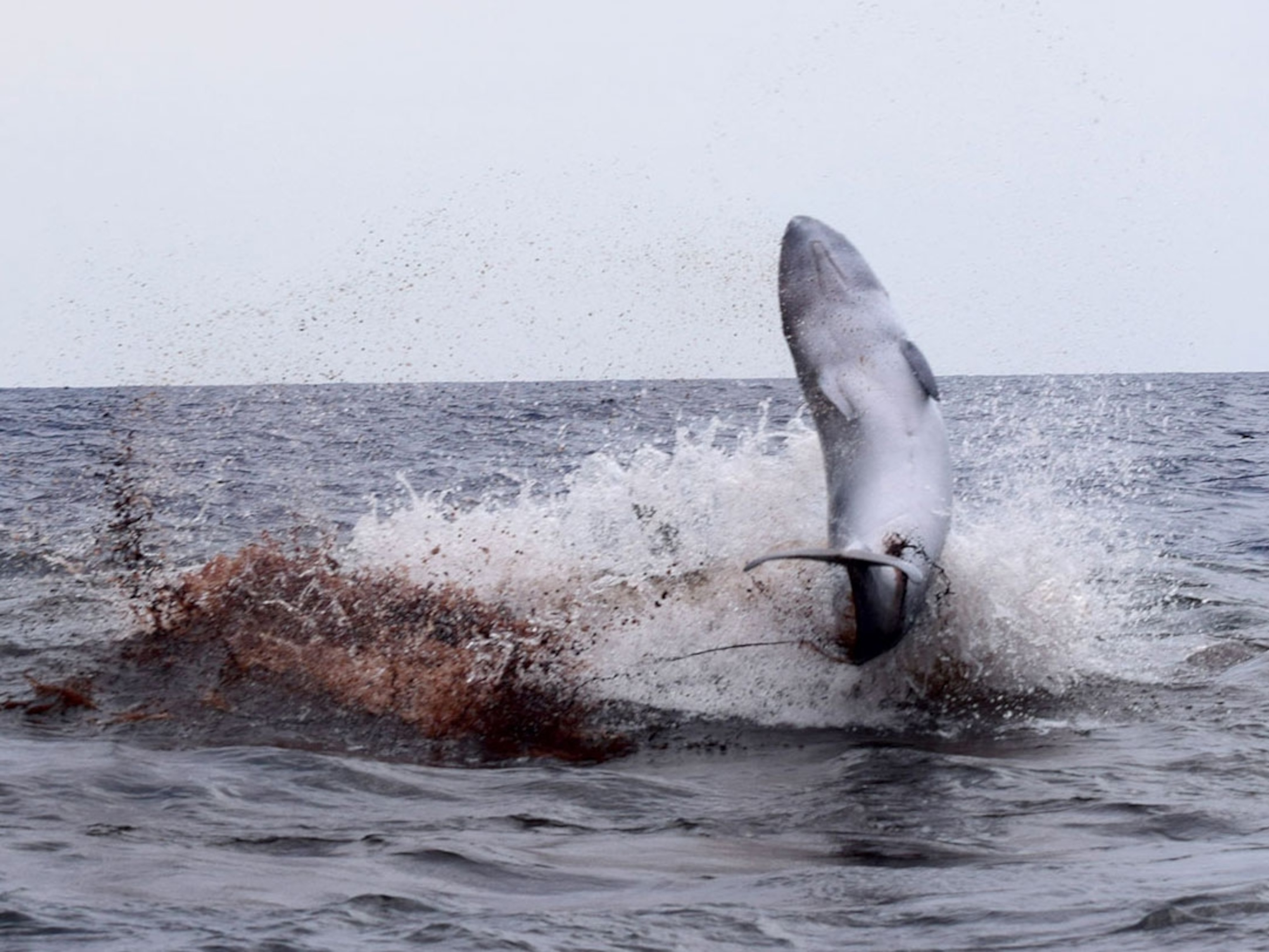Tourists in Costa Rica recently witnessed a magical and elusive event—the birth of a three-toed sloth.
Steven Vela, a guide with the company Canoa Aventura, spotted the brown-throated sloth (Bradypus variegatus) out of his car window near La Fortuna, not far from Arenal Volcano National Park. When he pulled over, he had no idea the animal was in the late stages of labor—or of the drama that would unfold next.
Seconds after the baby sloth emerged, it slipped out of its mother’s grasp. But instead of plummeting to the forest floor below, the baby dangled from its umbilical cord, prompting gasps from the onlookers. Perhaps surprising for the world’s slowest mammal, the mother then promptly reached down and hugged the baby against her body, licking her newborn clean. (Learn more incredible facts about sloths.)
“That was something amazing,” Vela, who videotaped the event, says in a Facebook message. “I think I will die and I will never see something like that [again].”
He’s probably right. Witnessing such a birth is extremely rare, says Rebecca Cliffe, executive director of the Costa Rica-based Sloth Conservation Foundation. “Not many people have seen this, especially in a [three-toed] sloth,” she says.
For starters, sloths are secretive and sedentary creatures, almost always hidden in the treetops. Three-toed sloths, of which there are four living species, are also much harder to spot in the wild than their cousins, the two-toed sloths.
Less clear, however, is whether the umbilical cord usually acts as a life-saving device for the tree-dwelling mammals—there simply aren’t enough observations to know for sure.
But the video illustrates why citizen science is so important: It offers a valuable glimpse into a species’ behavior that can help scientists fill in knowledge gaps about a particular species. What’s more, such observations can provide data for experts in crafting conservation plans.
The brown-throated sloth, which is widespread among protected areas in Central and South America, is not in danger of extinction—but other sloth species are, such as the critically endangered pygmy three-toed sloth. See "Pictures: Pygmy Sloth Among 100 Species Most At Risk.")
Baby lifeline?
As luck would have it, Cliffe has also seen a brown-throated sloth giving birth in Costa Rica, back in 2013.
In that case, when the baby fell, its umbilical cord got tangled around a branch. “It was all pretty dramatic,” she says. That mother sloth also simply reached down and scooped her young back up. “Then she ate all of the amniotic sac, and the cord, and then she ate the placenta,” Cliffe says.
“I don’t think [hanging from the umbilical cord] happens in every case,” adds Cliffe. “But I suspect it’s quite common and doesn’t really cause a problem. Just makes everyone watching a little nervous.”
Sam Trull, director and co-founder of The Sloth Institute, based in Costa Rica, suspects otherwise. (See Trull’s adorable photos of baby sloths.)
“I don’t think the baby dangling from the umbilical cord like in the video is the norm,” Trull says in an email.
For example, the placenta—to which the umbilical cord is attached—is usually delivered rather quickly after the baby, which means the mother may only have a short amount of time in which to reel her little one back in. Trull also notes mother sloths place their hands below their bodies in anticipation of their newborn, suggesting they’re not meant to hang from the cord. (Watch a video of sloths mating in captivity.)
“However, it being able to tether mom to baby is a great function! So I wouldn’t be surprised if sloths have extra-strong umbilical cords.
“I’m so jealous I wasn’t there to see it myself,” she adds. “Of all the skills sloth need to have, now we know catching a slippery baby is yet another one.”






